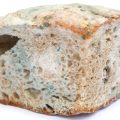Sourdough bread is an incredible product of flavor and texture, but what’s the best ways to store it? The way you store your sourdough loaf will ensure its freshness, whether it is store-bought or homemade sourdough bread. Here are some effective ways on how to store sourdough bread.
Table of Contents
- What Makes Sourdough Bread Different?
- Does Sourdough Bread Have a Use By Date
- Best Way to Store Homemade Sourdough Bread
- Ways to Use Leftover Sourdough Bread
- Sourdough Storage Tips for You
- Storing Sourdough Bread FAQs

What Makes Sourdough Bread Different?
Sourdough bread has a higher water content compared to yeasted bread, which allows the loaf to have an open crumb, with a moist interior.
Sourdough bread does not mold as quick as regular bread due to the good bacteria that are present in the sourdough starter and dough, especially after the baking process.
When you bake sourdough bread, the water in the dough is pushed outwards, forming the crust. Sourdough’s higher hydration is what ensures that the loaf remains fresher for longer. The crumb will also remain softer for longer.
There are other elements that can help keep sourdough bread fresher for longer. For instance:
- Sourdough that has been fermented correctly during bulk ferment will remain fresh for longer
- Ensuring that your sourdough bread has baked thoroughly, without undercooked parts
- Adding additional ingredients to the dough (i.e. eggs, butter or milk) can ensure that the loaf remains softer for longer
Does Sourdough Bread Have a Use By Date
While sourdough bread is loaded with beneficial bacteria that prevent mold growth, longer than regular bread, it does have a use by date.
As soon as your sourdough is taken out of the oven, it begins the process of becoming stale.
Keeping this in mind, its best to make use of your loaf within the initial 24 hours of baking. During this period your loaf will have a brilliant crust, that is both crisp and a little chewy. The inside will be soft and airy, tasting incredible when smeared with a glob of butter.
Best Way to Store Homemade Sourdough Bread
Baking sourdough bread can feel incredibly rewarding, especially when you’ve accomplished a fantastic moist homemade loaf with an open crumb. Often you may find yourself getting carried away, in experimenting with a variety of sourdough recipes, meaning that you’ll have too many loaves that require appropriate storage.
While devouring an entire loaf of sourdough isn’t completely absurd, it can be a tad challenging to incorporate slices into every meal. Here are a few methods to successfully store bread so that it remains flavourful and pleasant for longer:
- Covered With a Tea Towel
- Freezing
- Bread Bin
- Cloth Bag
- Disposable Packaging
Covered With a Tea Towel
If you’re planning to consume your loaf over the next few days then you can store it on the counter, covered with a tea towel.
Sourdough bread will remain fresher for longer than regular bread, because the acidity from the sourdough starter adds natural preservatives when incorporated in the dough.
Sourdough bread will remain edible on the counter at room temperature, though it may dry out, it will not mould for many days. Keep the cut side of the loaf face down on a plate and cover it with a tea towel.
Additionally, sourdough bread that has turned a little stale can still be used in various ways. Simply reheat the bread in a warm oven and it will become softer, ready to enjoy.
Freezing
Freezing your sourdough bread is the best way to ensure that it remains edible for longer. The key to success when planning to freeze bread include:
- Wait for your freshly baked bread to cool completely before wrapping and freezing. Ensure that your loaf is completely cool, as even a slightly warm loaf can cause condensation to form and spoil the texture of the crust.
- Place the bread into a freezer bag, or wrap it with a plastic wrap, before placing it into the bag for freezing.
- A cut loaf does not freeze as well as a whole loaf, as the crust protects the interior of the loaf better.
- The best way to store your loaf is through freezing slices, so that you can take out whatever you need and toast them.
Bread Bin
Try a bread bin or bread box to store your bread.
These are specifically designed to allow the appropriate amount of air circulation, that prevents mold from appearing, keeping the bread fresh.
You can also store other kinds of sourdough goodies in your bread box.
Cloth Bag
A great way to store homemade bread is by using a cloth bag. These bags are reusable and can be tucked anywhere, from your pantry, to your drawer, or simply in the corner of your kitchen counter.
Disposable Packaging
If you’re a home baker who happens to bake a lot of bread, then perhaps its time to sell some. You can try disposable packaging to store your bread loaves at home too.
Choose from:
- A plastic bread bag with ties, as this allows you to store sandwich bread, rolls or smaller baguettes
- Simply wrap your bread in aluminum foil, or plastic wrap
Other Ways to Store Sourdough Bread
There are alternative methods of storing sourdough fresh bread.
If you normally use a Dutch oven to bake sourdough bread, you can also use it as a bread box after baking.
Once the sourdough bread and Dutch oven have both cooled then place the bread inside the Dutch oven. Note that there will be no air circulation in the Dutch oven, which means that the crust will not remain crunchy, but it will become crisp once toasted.
Ways to Use Leftover Sourdough Bread
If you’re not keen on keeping loaves of sourdough bread on the kitchen counter or filling up your freezer, try some of these ideas:
- Run some slices of stale or fresh bread through a food processor to create sourdough bread crumbs.
- Chop your bread into large cubes, toss with melted butter and garlic salt, then bake for 20 minutes, or until crisp for delicious homemade sourdough croutons.
- Make a breakfast casserole that requires lots of bread.
Sourdough Storage Tips for You
Though sourdough bread will most likely remain fresh when stored on the kitchen counter, its best to use some of the methods mentioned above, to ensure that there is absolutely no mould growth, allowing you to enjoy your delicious loaves for longer.
Storing Sourdough Bread FAQs
How do You Store Whole Sourdough Bread?
If you plan to eat your sourdough bread in the next few days, then you should store your loaf at room temperature in a paper bag, as this will help keep your sourdough loaf soft
Where Should I Store My Sourdough Bread?
It’s better to store baked bread in the freezer. Sourdough bread doesn’t store well in the fridge, because the environment in the fridge is very dry and will cause the bread to harden, and become stale more quickly.
Can Sourdough Bread be Left on the Counter?
Slow fermented loaves like sourdough bread, contain a good amount of natural acid that keeps sourdough loaves edible and tasty for up to 5 days when kept at room temperature.
How Long Does Sourdough Bread Stay Fresh?
Sourdough bread will remain fresh for 3 to 5 days, when wrapped and stored appropriately, though its best to consume within 24 hours.










